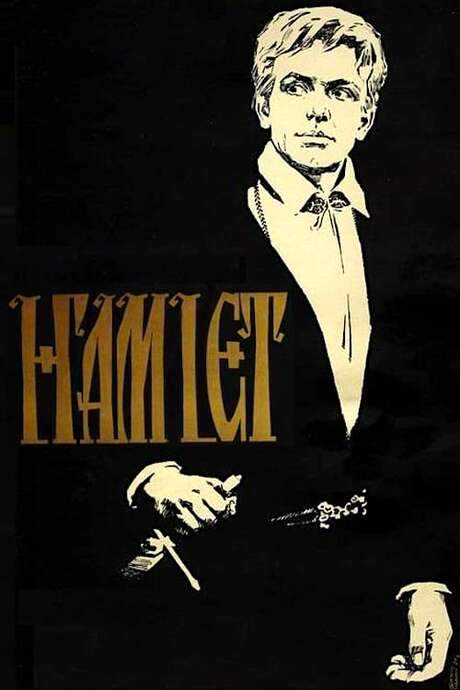
Hamlet
Year: 1964
Runtime: 140 mins
Language: Russian
Director: Grigori Kozintsev
Grigori Kozintsev sets Shakespeare’s melancholy Dane in the real Estonian castle of Elsinore, using its stone walls as a mental prison for Hamlet. Innokenti Smoktunovsky plays Hamlet as the lone sensitive intellect among debaucherous courtiers. Kozintsev’s bold move to have him deliver “To be or not to be” with his back to the camera invites the audience to supply its meaning as he plans his father’s revenge.
Hamlet (1964) – Spoiler-Free Movie Summary & Plot Overview
Get a spoiler-free look at Hamlet (1964) with a clear plot overview that covers the setting, main characters, and story premise—without revealing key twists or the ending. Perfect for deciding if this film is your next watch.
Grigori Kozintsev transports Shakespeare’s brooding Dane to the stark, stone‑clad walls of the real Estonian castle of Elsinore. The fortress becomes more than a backdrop; its cold corridors and looming battlements echo the inner confinement of a mind wrestling with doubt and destiny. Light filters through narrow windows, casting long shadows that suggest both history and a psychological maze, establishing a mood that is simultaneously austere and intensely lyrical.
In this world, the court teems with revelry and decadence, a stark contrast to the solitary contemplation that defines the film’s central figure. Hamlet moves through the gilded halls as the lone sensitive intellect, his quiet intensity setting him apart from the debaucherous courtiers who swirl around him in a haze of indulgence. This juxtaposition heightens the sense of alienation that pervades the narrative, making the castle feel less a royal residence and more a mental prison that amplifies his inner turmoil.
Kozintsev’s most striking visual decision—having Hamlet deliver the famed “To be or not to be” soliloquy with his back turned to the camera—asks the audience to fill the silence with their own interpretation. The choice strips away the familiar theatricality, leaving only the weight of the words and the palpable tension of a man on the brink of a decisive plan. It transforms a classic moment into a contemplative tableau, where meaning is as much a product of the viewer’s imagination as of the character’s intent.
The film’s tone balances melancholy with a measured, almost reverent restraint, allowing the viewer to linger in the spaces between action and thought. By grounding the timeless tragedy in a tangible, weather‑worn setting and emphasizing Hamlet’s introspective struggle, Kozintsev creates a meditation on power, grief, and the search for purpose that feels both timeless and eerily present.
Last Updated: August 20, 2025 at 17:48
Unlock the Full Story of Hamlet
Don't stop at just watching — explore Hamlet in full detail. From the complete plot summary and scene-by-scene timeline to character breakdowns, thematic analysis, and a deep dive into the ending — every page helps you truly understand what Hamlet is all about. Plus, discover what's next after the movie.
Hamlet Summary
Read a complete plot summary of Hamlet, including all key story points, character arcs, and turning points. This in-depth recap is ideal for understanding the narrative structure or reviewing what happened in the movie.

Hamlet Timeline
Track the full timeline of Hamlet with every major event arranged chronologically. Perfect for decoding non-linear storytelling, flashbacks, or parallel narratives with a clear scene-by-scene breakdown.



